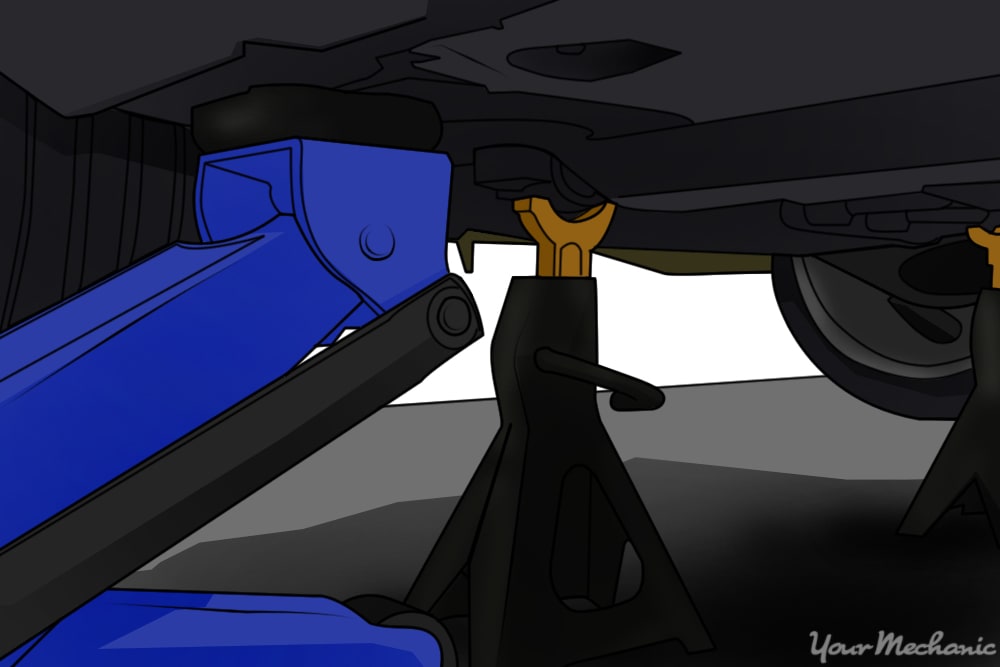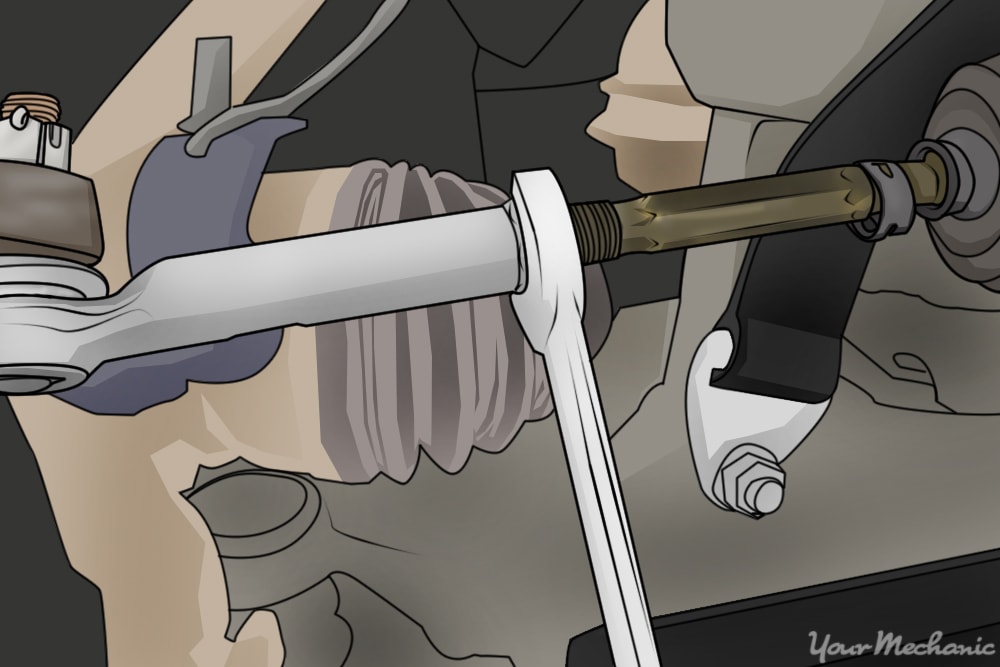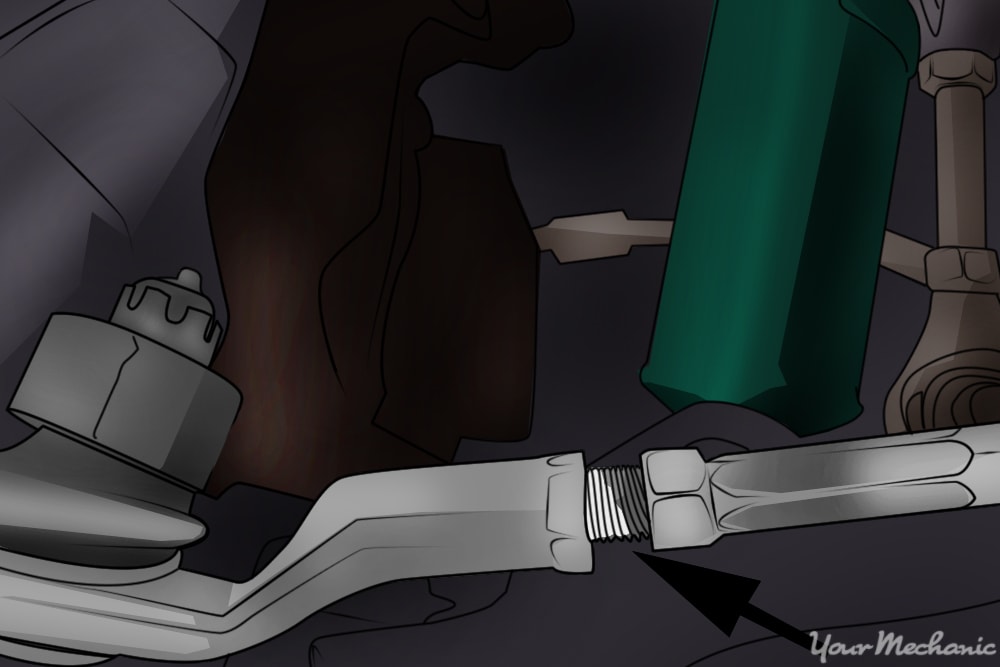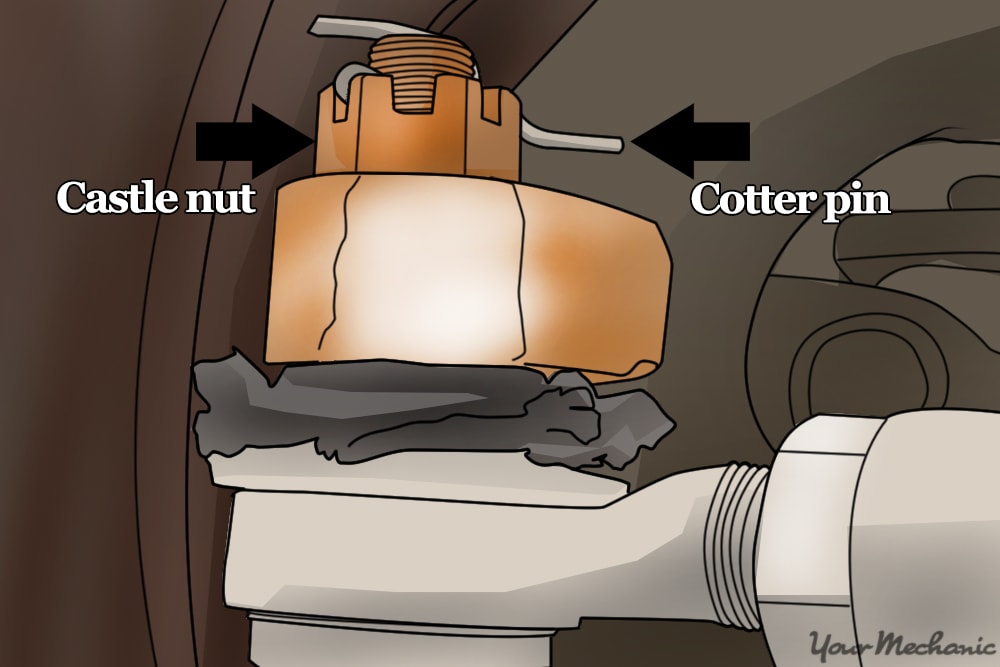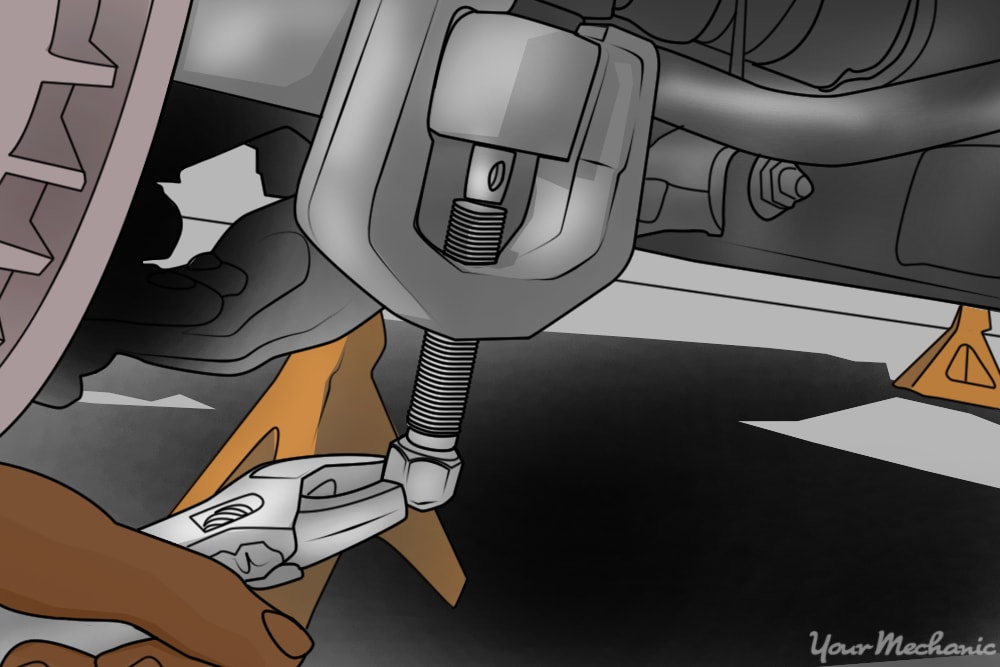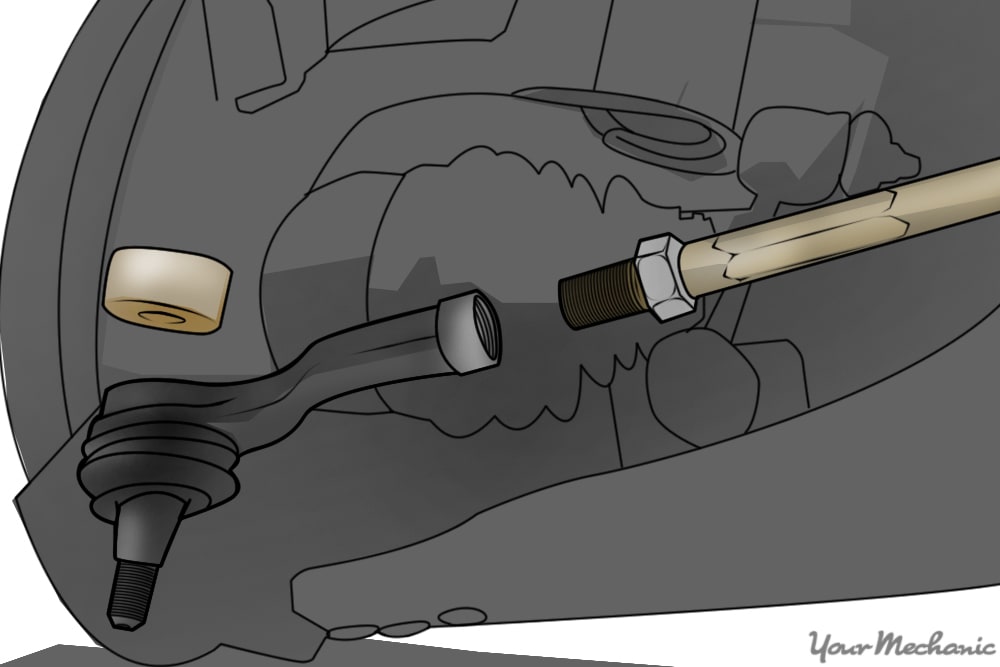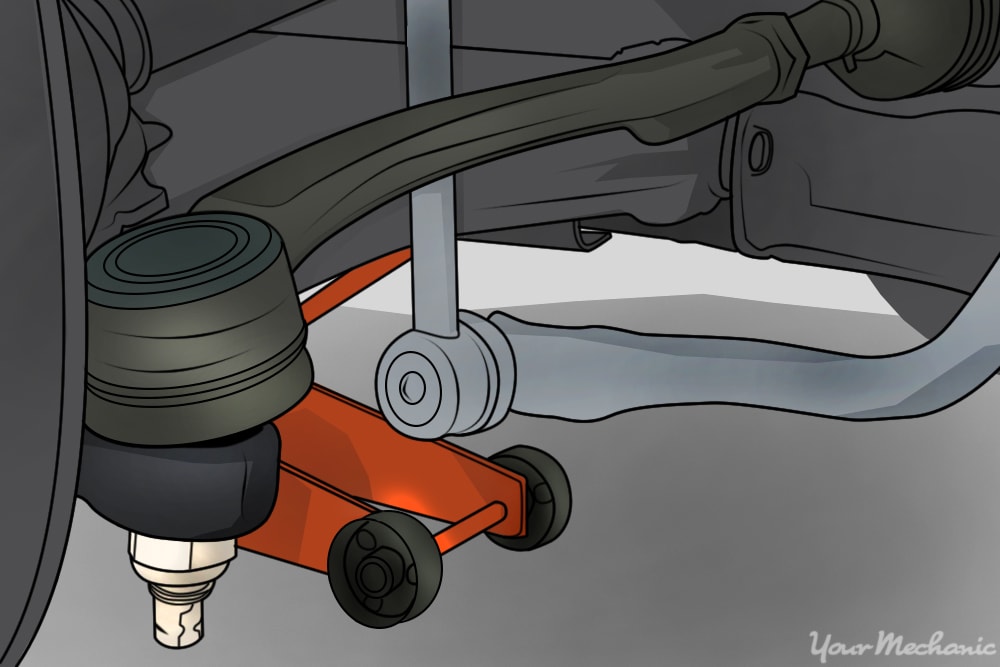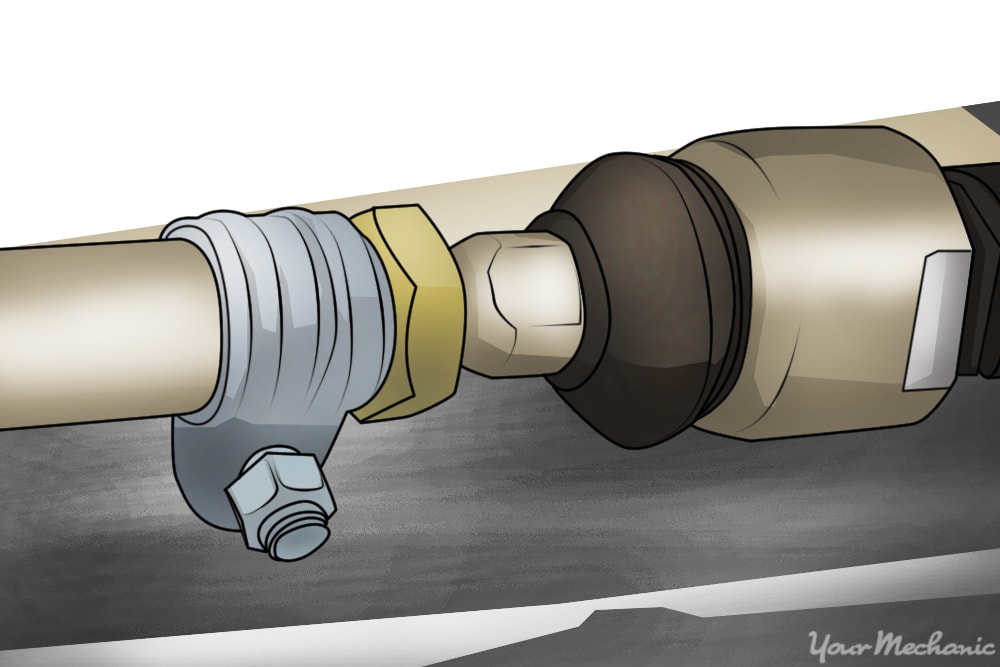

The tie rods are just one of many components in your steering system. The steering system consists of a steering wheel, steering column, a steering gear, tie rods and of course the wheels. In short, tie rods are parts that connect the steering gear to the front wheels of your vehicle. Therefore, when you turn your steering wheel, the tie rods assist the steering gear in pointing your front tires in the direction you want to go.
Tie rods are subject to a lot of abuse as they are used continuously when the car is in motion. That wear can be accelerated if your vehicle is modified, such as with a lifted truck or a lowered car, due to changing the geometry of the suspension. Road conditions can also contribute to excessive wear, such as due to unmaintained roads and potholes.
This repair can be done at home by the car owner; however, it is highly recommended to have your alignment checked and adjusted immediately after the repair to ensure your tires wear nice and evenly.
- Tip: Tie rod ends come in different designs and vary from one vehicle to the next. Be sure to get the right tie rod ends for your specific vehicle.
Part 1 of 1: Replacing your tie rod ends
Materials Needed
- ½ inch breaker bar
- ½ inch socket, 19mm and 21mm
- ⅜ inch ratchet
- ⅜ socket set, 10mm-19mm
- Combination wrenches, 13mm-24mm
- Cotter pins (2)
- Floor Jack
- Gloves
- Liquid marking pen
- Safety jack stands (2)
- Safety glasses
- Tie rod(s)
- Tie rod puller tool
Step 1: Park the car on a flat surface and loosen the lug nuts. Use your breaker bar and correct size socket to bust loose the lug nuts on the front two wheels, but don’t remove them yet.
Step 2: Raise the vehicle. Use the floor jack to raise the front tires off the ground and secure the vehicle in the air with your safety jack stands.
- Tip: When lifting a vehicle, you can always raise it by the frame on trucks and from the pinch welds on cars. You will typically see arrows, rubber pads or a reinforced part under the vehicle to lift. If in doubt on where to lift, refer to your owner's manual to locate proper lifting points on your specific vehicle.
Step 3: Remove the lug nuts and the tire. This will allow you to gain access to the steering components.
Step 4: Turn the steering wheel to the appropriate direction. The tie rod end should be pushed toward the outside of the vehicle.
To push the right tie rod end to the outside, the steering wheel should be turned to the left, and vice versa.
This gives us a little more room to perform the repair.
Step 5: Prepare to remove the tie rod end. Use the correct size combination wrench to break loose the locking nut for the tie rod end.
Loosen the nut enough to expose the threads at the end of the outer tie rod and use your marking pen to mark those threads. This mark will help us later when installing the new tie rod end.
Step 6: Remove the cotter pin from the tie rod end. Then find the correct size socket and your ⅜ ratchet.
Loosen and remove the castle nut that fastens the the tie rod end to the steering knuckle.
Step 7: Remove the old tie rod end. Use your tie rod puller tool to break the tie rod end out of its cavity in the steering knuckle.
Now turn the tie rod end counterclockwise to remove it from the inner tie rod. Count each full rotation as you remove the tie rod - this, along with the the marking from earlier, will be used to install the new tie rod end.
Step 8: Install the new tie rod end. Screw in the new tie rod end with the same number of turns it took to remove the old one. It should line up very close to the marking made earlier.
Insert the other end of the tie rod into its cavity of the steering knuckle. Install and tighten down the nut that fastens the tie rod end to the knuckle.
Slide a new cotter pin through the tie rod end and fastening nut.
Use your combination wrench to tighten the lock nut, securing the outer tie rod to the inner tie rod.
Step 9: Repeat as needed. If replacing both outer tie rods, repeat Steps 1-8 on the opposite side.
Step 10: Reinstall the tires, snug and tighten lug nuts, and lower vehicle. Once the tire is placed back on and the lug nuts snugged down, use your floor jack to remove the safety jack stands and lower the vehicle to the ground.
Tighten your lug nuts ½ to ¾ turn past snug.
You can feel proud that you have successfully changed your vehicle’s tie rod ends. Due to the fact that your tie rods control the toe alignment angle, it is strongly recommended to take your vehicle to your nearest automotive or tire shop to have a front wheel alignment performed. This will ensure that your tires wear evenly while driving along with using torque to tighten your lug nuts to factory specifications. If you don’t feel comfortable performing this repair on your own, you can have a certified mechanic - such as one from YourMechanic - come to your home or place of business to change your tie rod ends for you.



